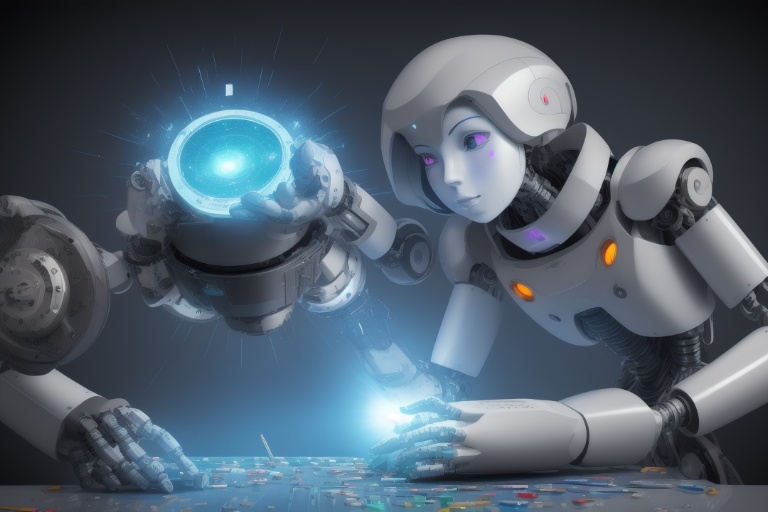Artificial intelligence (AI) stands as a testament to human ingenuity, allowing computers to emulate the complex problem-solving abilities characteristic of our species. This innovative realm has expanded dramatically over the years, paving the way for a future with virtually limitless potential. Our discussion will unravel the essence of AI, retracing its historical contours and investigating its various branches, including machine learning and deep learning.
Artificial intelligence (AI) stands as a testament to human ingenuity, allowing computers to emulate the complex problem-solving abilities characteristic of our species. This innovative realm has expanded dramatically over the years, paving the way for a future with virtually limitless potential. Our discussion will unravel the essence of AI, retracing its historical contours and investigating its various branches, including machine learning and deep learning.
Defining Artificial Intelligence
The concept of artificial intelligence is dynamic, adapting through the decades. John McCarthy, a luminary in the field, described it as the "science and engineering of making intelligent machines, particularly intelligent computer programs." AI, at its core, is about developing computer systems capable of intellectual functions typically associated with humans, transcending mere programmed instructions.
Alan Turing, commonly heralded as the "father of computer science," catalyzed the AI revolution. In his seminal piece, "Computing Machinery and Intelligence," Turing queried whether machines could think, propelling the concept of the "Turing Test" into the limelight. Despite scrutiny, his test harbors a foundational position in AI's philosophical and historical narrative.
The Pursuit of AI: Objectives and Perspectives
The book "Artificial Intelligence: A Modern Approach" by Stuart Russell and Peter Norvig offers four perspectives on defining AI's objectives, classifying them through the lenses of human-like and rational thought and action. These include systems that:1. Think like humans and act like humans2. Think rationally and act rationally
Turing's definition leans into the category of systems that display human-like behavior. AI integrates computer science with rich data repositories, enabling systems to address complex issues and make decisions.
Exploring Machine Learning and Deep Learning
Machine learning stands as a subfield within AI, focusing on developing algorithms that empower computers to learn from data. These tools are adept at identifying patterns and extracting insights, allowing them to make informed predictions or decisions.
Deep learning represents a specialized branch of machine learning, harnessing the capability of artificial neural networks. With numerous layers in these algorithms, deep learning excels at learning data representations at multiple levels, facilitating processes like feature extraction with minimal human supervision. It shines particularly in handling unstructured data, managing to discern features autonomously, which is critical in classifications involving text and images.
Progress and Applications of AI
AI has experienced its fair share of peaks and valleys in public perception, but every breakthrough has the potential to steal the spotlight. The advent of models like OpenAI's ChatGPT has thrust natural language processing into a new era. With its sophisticated text generation and comprehension, applications span numerous domains, from automating customer service to crafting content.
Yet, the more pervasive AI becomes, the louder the conversation grows about its ethical implications. It's vital to contemplate the ethical dimensions, striving for AI development that is both responsible and free from ingrained biases.
AI Types: The Spectrum from Weak to Strong
Artificial intelligence is often delineated into weak AI (or Narrow AI) and strong AI. Weak AI encapsulates systems devised to excel at particular tasks: think Siri, Alexa, or self-driving cars. Although they are proficient within their realms, they don't possess the wider cognitive abilities endemic to humans.Conversely, strong AI, encompassing concepts like Artificial General Intelligence (AGI) and Artificial Super Intelligence (ASI), aspires to create machines whose cognitive prowess either matches or exceeds human intellect. AGI is a hypothetical level of AI where machines could display self-awareness and sophisticated problem-solving akin to humans, whereas ASI—often the domain of science fiction—suggests an intelligence surpassing human capabilities.
Deep Learning and AI's Horizon
As AI marches forward, deep learning promises a revolution across industries. Its prowess in processing intricate, unstructured data is already transforming healthcare, finance, and technology sectors. Deep learning algorithms can decode not just human language but also the intricate 'grammars' of software code, molecular structures, and natural world vignettes.
Although strong AI is largely notional, the realm's custodians actively probe its potential. The trajectory of AI is still being charted, but one certainty prevails: the influence of AI on our collective destiny is destined to be deep and far-reaching.
Artificial intelligence isn't just a technological novelty; it's a pivotal force that is set to redefine our interaction with the world. With a foundational grasp of AI, machine learning, and deep learning, we position ourselves to harness the benefits of a future where intelligent machines are integral. In our ongoing series, we'll dive deeper into the real-world applications of AI, shedding light on how this transformative technology is reshaping diverse sectors. Join us as we continue our excursion into the boundless domain of artificial intelligence.
Information for this article was gathered from the following source.

